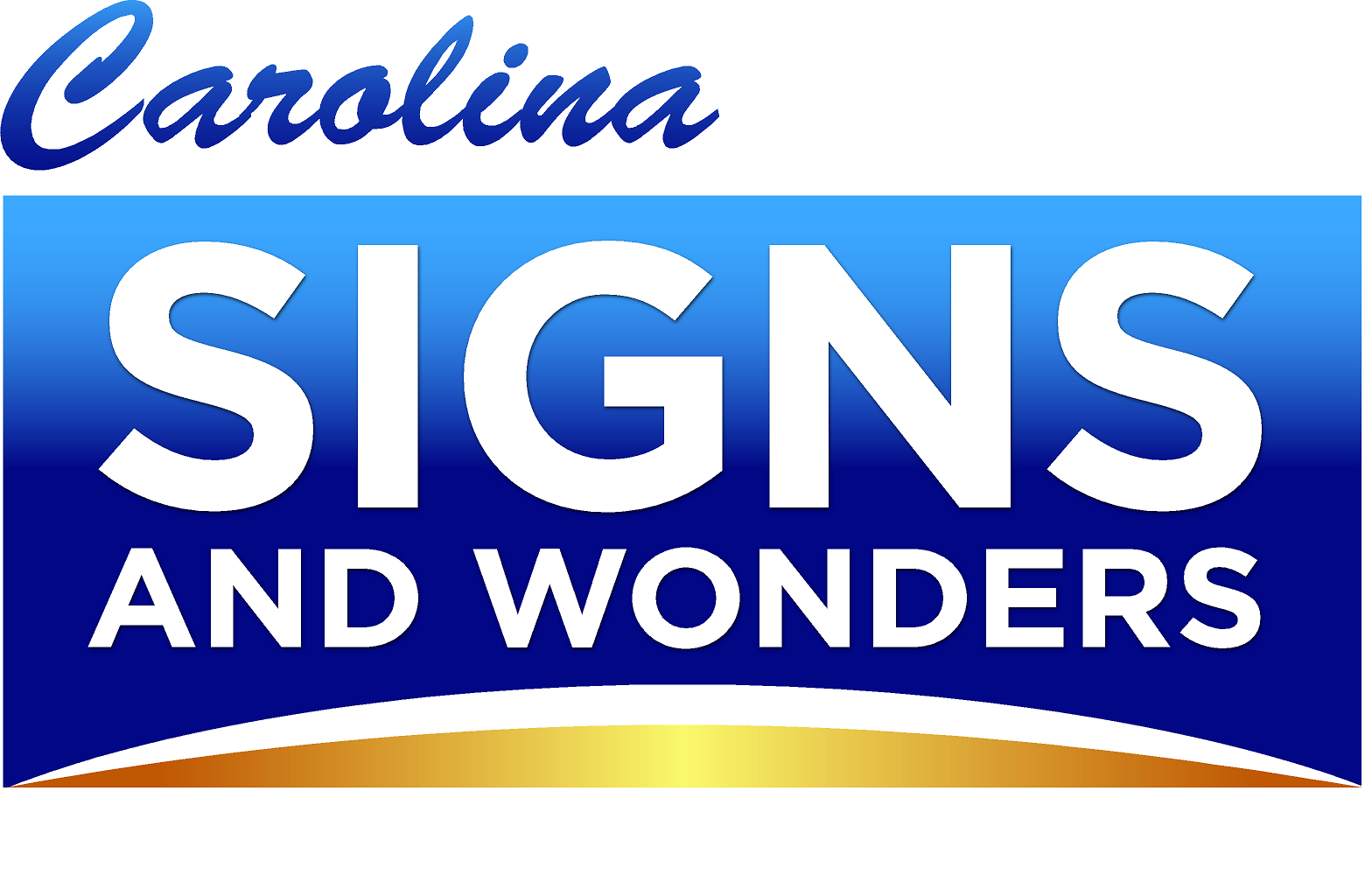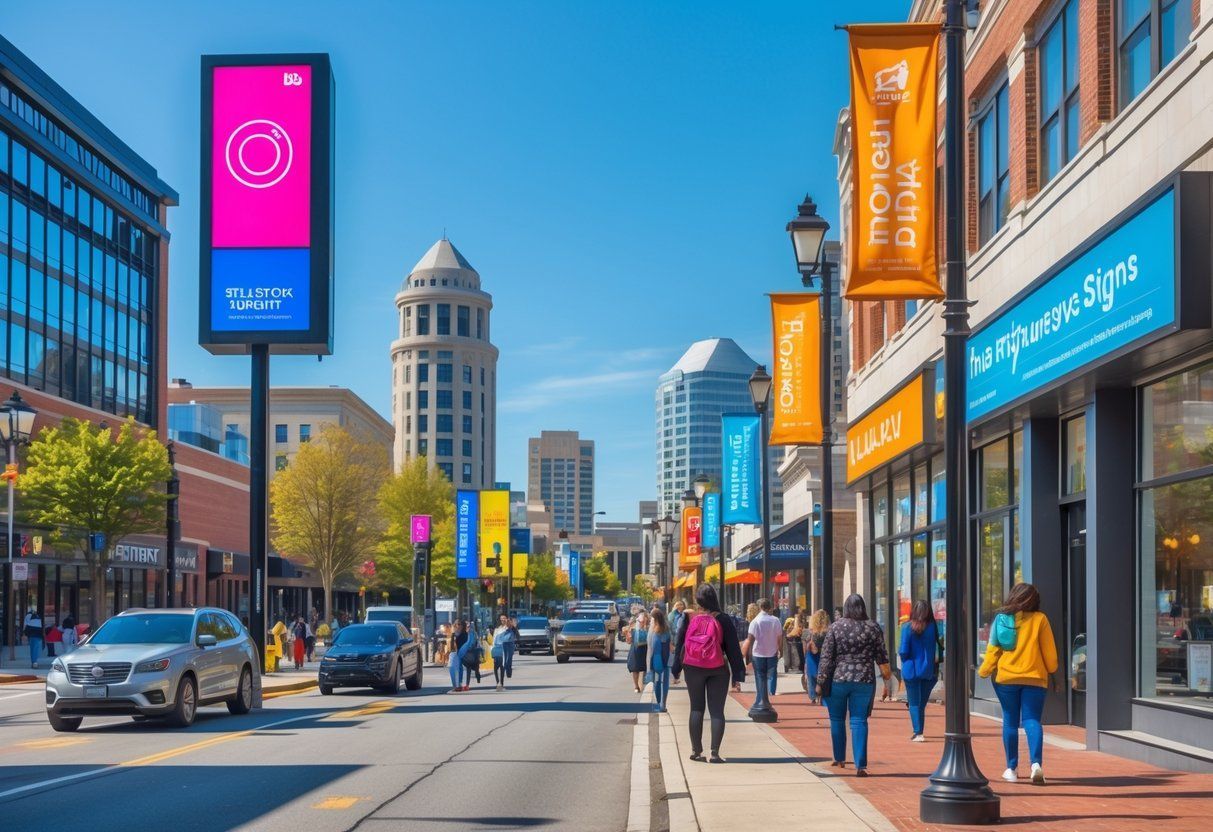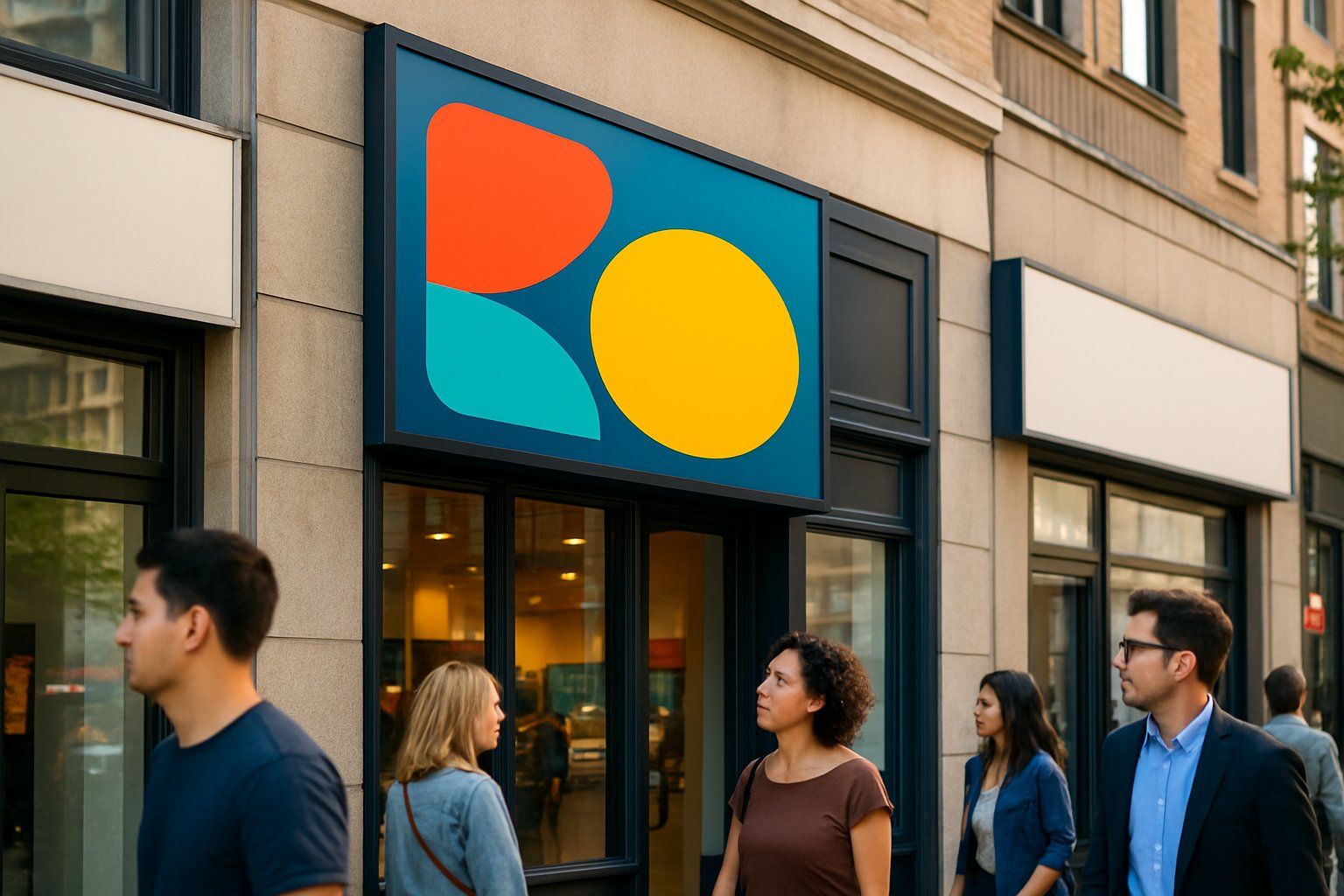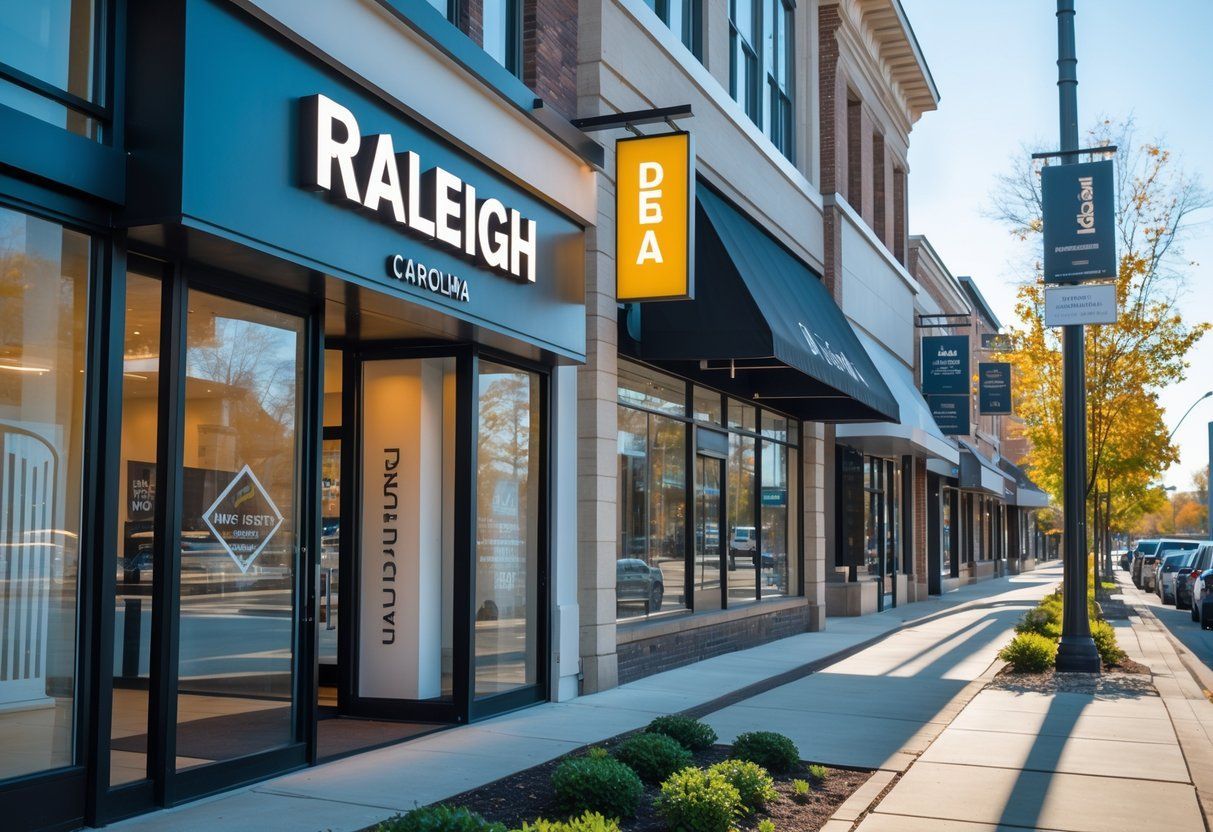Design and Manufacturing of Sign: Best Practices for High-Impact Signage
Design and manufacturing of signs require careful attention to both visual appeal and durability. Creating effective signs involves choosing clear, legible fonts, bold colors, and innovative designs while selecting materials that withstand weather and time.
A well-made sign not only attracts customers but also supports a business’s brand for years.
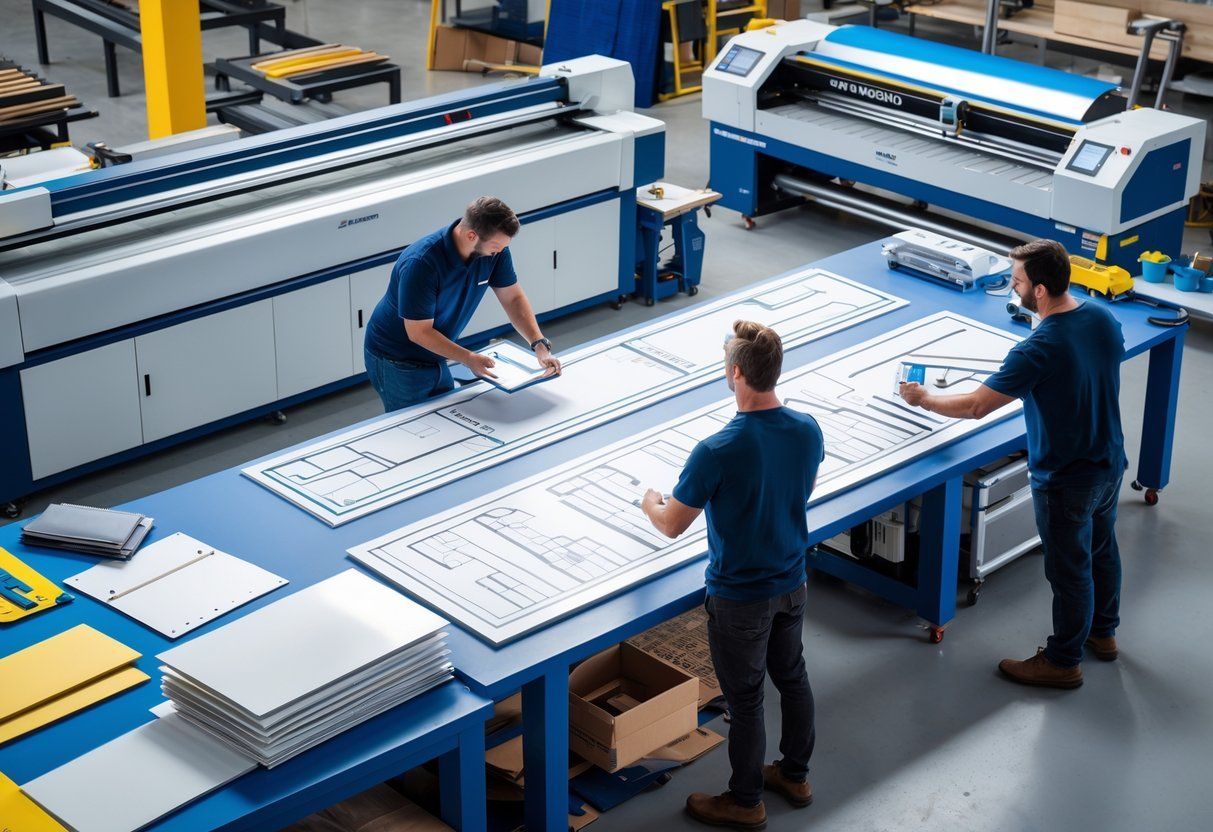
Quality materials like aluminum and acrylic and design elements like LED lighting help make signs stand out. Additionally, signs must follow local rules to avoid fines and ensure safety.
Combining strong design with proper manufacturing practices results in signs that communicate messages clearly and last longer under various conditions.
Key Takeways
- Clear design and strong materials create effective, durable signs.
- Innovative features improve visibility and brand recognition.
- Compliance with regulations ensures safety and legal approval.
Understanding the Role of Signs and Signage
Signs and signage serve many roles that go beyond simple decoration. They communicate messages, guide people, and support business goals through clear visual representation.
Different types of signs meet specific needs, while new design trends improve their effectiveness and appeal.
Purpose and Impact of Signage
Signage helps businesses and organizations deliver clear information to their audiences. It supports branding by reinforcing company identity through consistent design elements like color and logo.
Signs also improve customer experience by providing directions, safety alerts, or product information.
Well-designed signage increases visibility, draws attention, and can boost sales by attracting more foot traffic.
Factors like legibility, scale, and uniqueness impact how well a sign performs its job.
Diverse Types of Signs
There are several types of signs, each serving different functions.
- Storefront Signs : Attract customers and communicate brand identity.
- Wayfinding Signs : Help with navigation in complex spaces like malls or campuses.
- Promotional Signs : Highlight sales, events, or special offers to encourage purchases.
- Safety Signs : Deliver warnings and instructions to prevent accidents.
Each type requires specific design and manufacturing approaches to ensure clarity and durability in its environment.
Understanding these categories helps create effective signage strategies.
Trends in Modern Signage
Modern signage incorporates new technology and design methods to enhance communication and durability. LED lighting and digital displays enable dynamic content that updates easily.
Materials like weather-resistant composites and eco-friendly options improve longevity and reduce environmental impact.
Design trends favor simplicity, high contrast, and bold typography to ensure quick readability from a distance.
Integration with mobile apps and interactive elements is growing, allowing signs to provide richer, real-time information to users.
These trends reflect the evolving ways signs meet customer needs and business goals.
Fundamentals of Sign Design
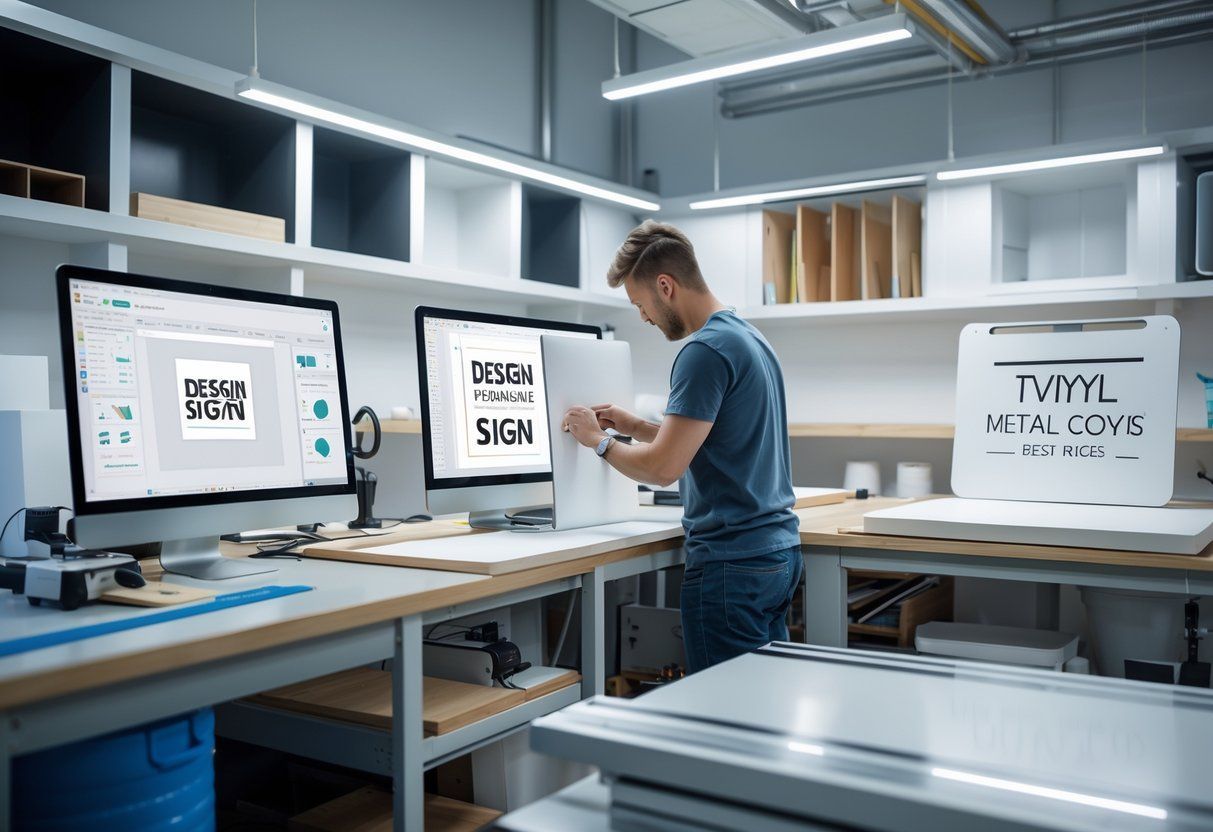
Effective sign design depends on clear planning, understanding the audience, and keeping brand identity consistent.
These elements ensure the sign communicates its message quickly and clearly while reflecting the business’s style.
Defining Clear Objectives
He or she must start by clearly defining what the sign needs to accomplish. Is the sign meant to attract new customers, provide directions, or promote a specific product?
Each goal will shape the design differently. Clear objectives help decide the size, wording, and visuals used.
For example, a promotional sign may need bold, attention-grabbing text, while an informational sign should focus on clarity and simplicity.
A good objective also sets the tone for colors and images that match the message.
By setting specific goals, the design process becomes focused. It reduces unnecessary elements and keeps the sign effective under real-world conditions such as distance and lighting.
Audience Analysis
Understanding who will see the sign is key. The design must fit the audience’s preferences, behavior, and environment.
For example, a sign near a busy street should be easy to read at high speeds, with large fonts and simple colors.
Age, culture, and location affect design choices. A youthful audience might respond better to modern fonts and bright colors, while a professional setting may require more conservative styles.
The designer should research or gather data about the typical viewers before finalizing the design. This targeted approach boosts the sign’s impact by making it relevant and readable for its intended viewers.
Brand Consistency in Design
Maintaining brand consistency helps reinforce business identity through signage. The sign should use brand colors, fonts, and logos exactly as outlined in brand guidelines.
This builds trust and recognition across all customer touchpoints. Consistency avoids confusion and strengthens the brand message.
Even if adapting the design for different sign types, key brand elements must stay uniform. Using the same visual style across storefront signs, banners, and wayfinding signs ensures that customers instantly associate the sign with the business.
A well-branded sign supports marketing efforts and improves overall customer perception.
Best Practices for Visual Elements
Effective signs use clear visual elements to communicate messages quickly. Key factors include how easy the sign is to read, the choice of colors and fonts, and the way graphics and layouts guide the viewer’s eye.
Each element plays a specific role in making signs stand out and deliver information effectively.
Readability and Legibility
Readability means a sign’s message is easy to understand, while legibility refers to how clearly the text can be seen. Signs must use fonts that are simple and bold enough to read from a distance.
Spacing is important. Letters and words should have enough space so they don’t blur together.
Avoid overly decorative fonts that reduce readability, especially for outdoor signs seen from far away. Text size depends on viewing distance.
For example, letters should be at least 1 inch tall for every 10 feet of viewing distance. Signs that fail to follow these rules risk being ignored or misunderstood by viewers.
Color and Font Selection
Colors must contrast well to make text stand out against the background. Dark text on a light background or vice versa works best for visibility.
Avoid using too many colors that clash; instead, use a limited palette to maintain a clean look. Bright colors draw attention but should be balanced to avoid tiring the eyes.
Fonts should be easy to read and consistent throughout the sign. Sans-serif fonts like Arial or Helvetica are often better for signs than serif fonts because they appear cleaner from a distance.
Graphics and Layout Optimization
Graphics should support the message without overwhelming it. Simple images or logos that reinforce the brand identity are most effective.
Layout guides the viewer’s eye from the most important information to the least. Use a clear hierarchy by making the headline largest, followed by supporting details in smaller type.
Consider using bold shapes, lines, or borders to separate sections and keep the layout organized. Consistent alignment and balanced spacing also help viewers process information quickly.
Material Selection for Quality and Durability
Choosing the right materials is key to making signs that last and look good. Factors like strength, weather resistance , and appearance affect how well a sign performs.
Selecting materials also depends on whether the sign is for indoors or outdoors, and if sustainability matters to the business.
Evaluating Quality Materials
Quality materials ensure signs remain effective over time. Common choices include aluminum, acrylic, PVC, wood, and foam .
Aluminum is strong, rust-resistant, and lightweight, making it excellent for long-lasting outdoor signs. Acrylic offers a smooth, modern look and good durability , often used indoors.
PVC is a budget-friendly yet tough option, suitable for both indoor and outdoor signs. Signs made from wood or foam board add unique texture but require more care.
The right material supports clear printing or graphics and resists fading, cracking, or warping. Choosing quality materials reduces maintenance and replacement costs.
Sustainability and Eco-Friendly Options
Sustainability is becoming an important factor in sign manufacturing. Eco-friendly materials like recycled aluminum and biodegradable plastics help reduce environmental impact without sacrificing durability.
These materials usually maintain strength and appearance similar to traditional options. Energy-efficient production methods also support sustainability by lowering waste and emissions.
Businesses focusing on green practices benefit from partnering with manufacturers that prioritize eco-friendly materials and processes. Sustainable signs reflect a company’s commitment to the environment and can attract eco-conscious customers.
Outdoor vs Indoor Sign Material Choices
Outdoor signs require materials that resist weather, UV rays, and temperature changes. Aluminum and PVC are preferred for their water resistance and durability.
Coatings or finishes often improve weather protection. Outdoor signs must also handle wind and possible physical impacts.
Indoor signs can use materials that focus more on aesthetics. Acrylic, wood, and foam boards are common because they offer creative design flexibility and clear visuals without needing extreme weather resistance.
Indoor signs usually face less wear, so appearance and texture become more important than heavy-duty durability.
Compliance and Regulatory Considerations
Sign design and manufacturing require strict attention to rules that govern where and how signs can be placed. These rules ensure signs are safe, lawful, and meet community standards.
Understanding both local laws and safety requirements helps avoid fines and delays.
Local Signage Laws and Permitting
Local sign laws vary by city, county, and state. These laws control sign size, placement, lighting, and message content.
Businesses must check zoning rules before installing signs to ensure compliance. Permits are often required for new signs or changes to existing ones.
The permitting process usually involves submitting a detailed sign plan to local authorities. This plan must show dimensions, materials, and location.
Failing to get permits or ignoring sign codes can lead to fines, forced removal, or costly redesigns. It is best practice to consult local planning departments early to confirm all requirements.
Safety and Accessibility Standards
Signs must meet safety rules to protect people. This includes using materials that resist fire and weather damage.
Proper installation is essential to keep signs secure and stable. Accessibility rules ensure that signs are usable by all people, including those with disabilities.
This often means using clear fonts, good lighting, and contrasting colors. Signs may also need to follow standards like the Americans with Disabilities Act (ADA) for public spaces.
Following safety and accessibility standards reduces legal risk and improves public trust. It also creates clearer, easier-to-read signs that better serve their purpose.
Manufacturing Process and Technology
The sign manufacturing process involves several precise steps that turn designs into finished products.
Advanced technology, like printers and cutters, plays a key role in achieving accuracy and quality.
Working with experienced sign manufacturers ensures the best use of these tools for effective results.
Key Stages in Sign Manufacturing
Sign manufacturing starts with material preparation, selecting substrates like acrylic, metal, or vinyl based on durability and application.
The next stage involves fabricating parts using cutting, shaping, and assembling. During production, quality control checks are essential to maintain consistency.
Prototyping is often part of the process, helping to test design feasibility and installation needs.
The manufacturing process may also include applying finishes, such as laminates or protective coatings, to improve weather resistance and longevity.
Safety standards and regulations guide this entire process.
Utilizing Printers and Cutters
Printers and cutters are vital tools in sign manufacturing. Large-format printers produce high-resolution graphics directly on materials like vinyl or fabric.
These printers support vibrant colors and sharp details needed for outdoor and indoor signage.
Cutters, including CNC routers and laser cutters, shape materials with precision. They are used to cut letters, logos, and complex shapes from metal, plastic, or wood.
Vinyl plotters cut adhesive vinyl for lettering and logos, allowing easy installation and clean edges.
The combination of printing and cutting technologies increases production speed while ensuring accuracy.
Regular maintenance of this equipment helps avoid downtime and maintains print quality.
Collaborating with Professional Sign Manufacturers
Partnering with a professional sign manufacturer brings technical expertise and access to specialized equipment. They understand material properties, production constraints, and installation requirements.
Experienced manufacturers manage the entire process from design adaptation to fabrication and installation. They also help navigate permits and regulatory compliance when required.
Their knowledge of advanced technology and quality control produces durable signs that last. Clear communication with the manufacturer helps align project goals, timelines, and budget.
This collaboration reduces errors and prevents costly delays during production and installation.
Quality Control and Continuous Improvement
Quality control ensures signs meet strict standards at every stage. Continuous improvement focuses on fixing problems quickly and making processes better over time.
Inspection and Testing Procedures
Sign manufacturers perform detailed inspections at key points during production to catch defects early. These include visual checks to spot surface flaws and functional tests to confirm durability and performance.
Testing also measures if signs meet size, color, and material specs. Inspections happen after each major step like cutting, printing, and assembly.
This step-by-step review helps reduce errors before products leave the factory. By applying rigorous tests based on industry standards, manufacturers minimize returns and rework.
Checklists and calibrated tools support consistent inspections. Data from these tests guides immediate fixes and long-term quality improvements.
Standard Operating Procedures
Standard Operating Procedures (SOPs) provide clear, step-by-step instructions for every manufacturing task. They guide employees in consistent methods for design, material handling, equipment use, and finishing processes.
SOPs reduce guesswork and human error. By following SOPs, sign manufacturers maintain uniform quality across all products, regardless of shifts or teams.
These procedures are regularly reviewed and updated based on feedback and audit results to keep pace with changing technology and standards. Training staff on SOPs ensures everyone understands the importance of each step.
This leads to fewer defects and higher efficiency. SOPs form a foundation for predictable, repeatable quality delivery.
Supplier Evaluation and Feedback Integration
Using high-quality materials starts with selecting and monitoring reliable suppliers. Sign manufacturers evaluate suppliers on factors like material consistency, delivery speed, and adherence to specs.
Regular audits and sample testing verify supplier performance. Good communication between manufacturers and suppliers helps identify issues early.
Feedback from production teams about material problems can lead to quicker supplier corrections or changes. Customer feedback also shapes quality improvements.
Analyzing complaints, returns, and warranty claims reveals patterns in product issues. This information helps refine materials, manufacturing steps, or supplier choices to prevent future problems.
Integrating supplier reviews and customer insights creates a stronger overall quality control system.
Installation, Maintenance, and Longevity
Proper installation, planned maintenance, and ongoing care help signage stay effective and safe for years. Each step requires attention to detail and use of appropriate materials and methods to avoid issues like damage, fading, or safety hazards.
Best Practices for Installation
Site assessment is essential before installing signage. The sign’s location must offer clear visibility to pedestrians and drivers.
Height and font size should match the viewing distance, such as 1 inch of letter height for every 10 feet of visibility. Materials should fit the environment.
Outdoor signs need weather-resistant components like aluminum frames and UV-resistant surfaces. Using the right tools or hiring professionals ensures secure, code-compliant installation, especially for heavy or illuminated signs.
Professional installers help avoid mistakes that could lead to damage or accidents. They ensure proper mounting , electrical safety, and meet local regulations.
Maintenance Planning
Regular cleaning keeps signage clear and readable. Simple soap and water works for many signs, but delicate materials like acrylic need special cleaners to prevent damage.
Cleaning should happen when dirt builds up or at least every three months. Routine inspections are needed at least twice a year to check for cracks, fading, loose mounts, or electrical issues.
Early detection prevents small problems from becoming costly repairs. Keeping a maintenance log helps track cleaning dates, repairs, and inspections.
This record supports timely care and extends signage life.
Ensuring Long-Term Performance
Timely repairs maintain both the appearance and safety of signage. Loose parts or cracked panels should be fixed quickly to prevent further damage.
Environmental factors like sun, wind, and moisture affect durability. Choosing appropriate materials initially and protecting signs with coatings can reduce wear.
Updating signage graphics or replacing components when branding changes keep signs relevant.
Frequently Asked Questions
Effective signage depends on choosing the right size and location, selecting durable materials, and meeting legal rules. Color use and ongoing care also play major roles.
Good design helps businesses stand out and connect with customers.
What factors determine the optimal size and placement of a sign?
The size should match the viewing distance and the environment. Signs must be large enough to read quickly but fit within the space available.
Placement depends on where the sign can be seen best by the target audience. Lighting, sightlines, and local rules also matter when deciding where to place a sign.
How can material selection impact the durability and effectiveness of a sign?
Materials affect a sign’s lifespan and how well it performs in different weather conditions. Strong, weather-resistant materials last longer and keep a sign looking good.
Choosing reflective or illuminated materials can improve visibility day and night. Materials also influence the style and overall look of the sign.
What are the compliance requirements for commercial signage?
Signage must follow local laws about size, height, lighting, and location. These rules vary by city or state and are designed to ensure safety and community standards.
Businesses should check building codes and zoning laws before installing signs. Some areas require permits or inspections.
How does color theory apply to the design of effective signage?
Colors affect how easily signs are seen and the emotions they trigger. High contrast between text and background improves readability.
Certain colors attract attention or create specific moods, such as red for urgency or blue for trust. Using brand colors helps with recognition.
What are the best methods for ensuring long-term maintenance of signage?
Regular cleaning and inspections prevent damage and wear. Fixing small issues, like fading or loose parts, extends the sign’s life.
Using durable materials from the start reduces the need for repairs. Proper installation also minimizes damage over time.
How can signage design enhance brand recognition and customer engagement?
Consistent use of logos, colors, and fonts strengthens brand identity.
Clear, simple messages make it easier for customers to understand and remember.
Creative designs or unique shapes can attract attention and invite interaction.
Well-designed signs support marketing and improve the overall customer experience.…
